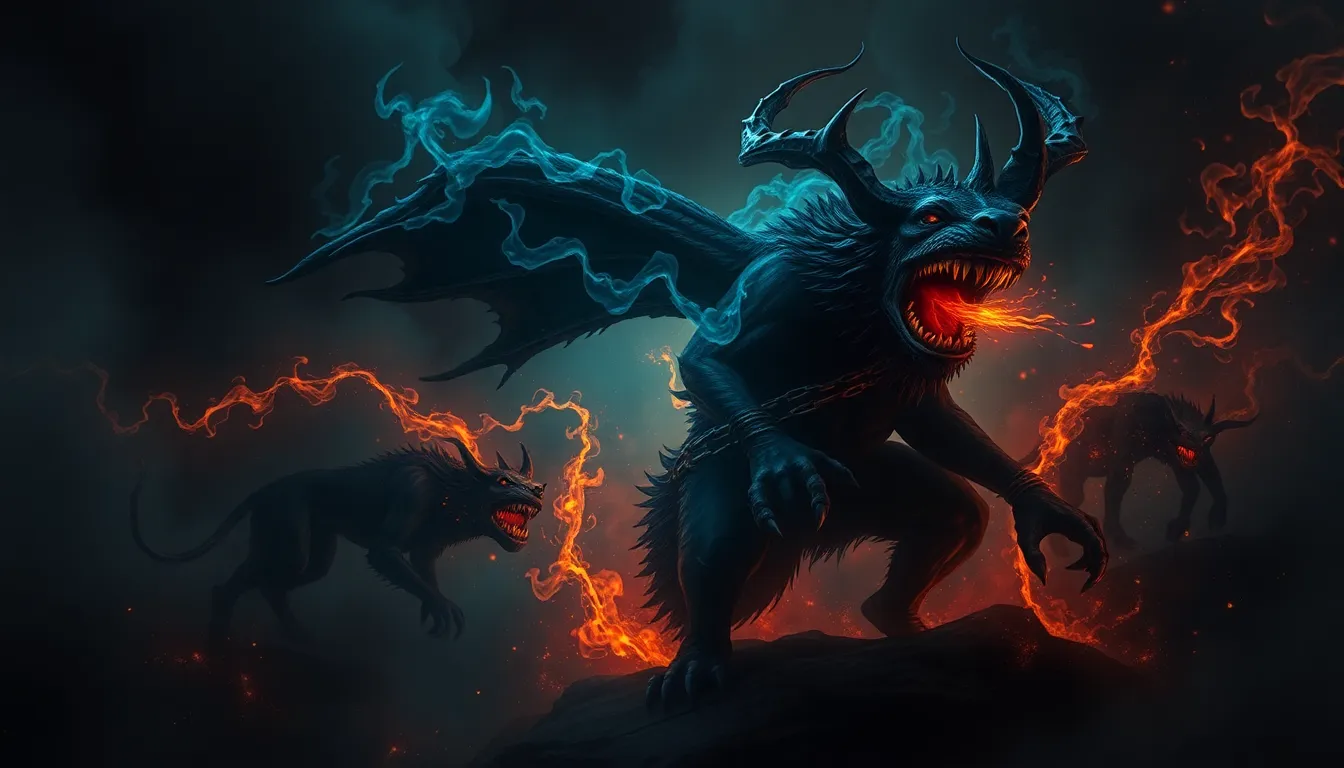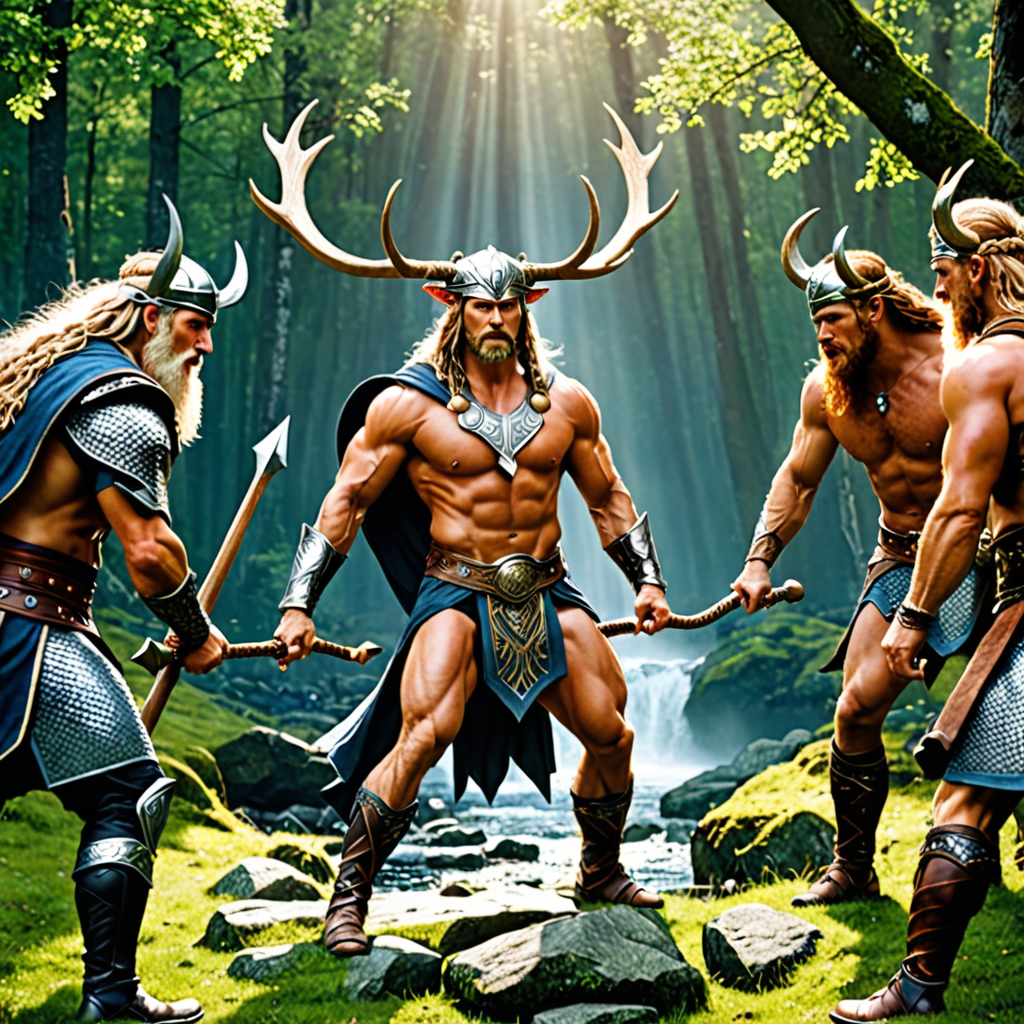The Serpent’s Wisdom: Jörmungandr Parallels in Indigenous American Serpent Mythologies
1. Introduction
Norse mythology is rich with symbolism and epic narratives, and among its most fascinating figures is Jörmungandr, the World Serpent. This colossal serpent encircles the earth, representing the cyclical nature of existence and the intricate balance of creation and destruction. Across various cultures, serpents have held significant places in mythologies, often embodying dualities such as life and death, wisdom and folly, and creation and annihilation. This article aims to explore the parallels between Jörmungandr and serpent mythologies found in Indigenous American cultures, revealing the universal themes that connect these disparate traditions.
2. Jörmungandr: The World Serpent
Jörmungandr, the Midgard Serpent, is a central figure in Norse cosmology. Born of the god Loki and the giantess Angerboda, Jörmungandr is cast into the ocean that surrounds Midgard (the world of humans) by Odin, where it grows so large that it can encircle the earth, biting its own tail. This imagery is powerful, symbolizing infinity and the interconnectedness of all beings.
In Norse mythology, Jörmungandr is not merely a creature but a profound symbol of chaos and danger. Its presence is inextricably linked to the events of Ragnarök, the prophesied end of the world. During Ragnarök, Jörmungandr is foretold to rise from the ocean, instigating a final battle against Thor, the god of thunder. This clash between Jörmungandr and Thor encapsulates the themes of destruction and renewal that are prevalent in many mythological narratives.
3. The Serpent as a Cultural Symbol
Across cultures, the serpent emerges as a potent symbol with multifaceted meanings. Commonly, serpents represent:
- Transformation: Shedding skin symbolizes rebirth and renewal.
- Wisdom: Serpents are often seen as keepers of knowledge, guiding humanity through trials.
- Duality: They embody both creation and destruction, healing and venom.
In many creation myths, serpents play crucial roles, often as creators or destroyers, shaping the world and humanity’s place within it. This dual nature reflects the complexities of life, where creation and destruction are interconnected processes.
4. Indigenous American Serpent Mythologies: An Overview
Indigenous American cultures encompass a diverse array of tribes, each with their own rich mythologies and beliefs. Serpents appear prominently in many of these traditions, often symbolizing fertility, wisdom, and the earth itself. Common themes and motifs related to serpents include:
- Creation and Fertility: Serpents often feature in agricultural myths, representing the fertility of the earth.
- Guardianship: Many tribes view serpents as guardians of sacred knowledge and the underworld.
- Transformation: Serpents are associated with transitions, from one state of being to another.
In spiritual practices, serpents may be invoked in rituals to ensure bountiful harvests or to seek guidance from the spirit world, highlighting their significant role in the cultural and spiritual lives of Indigenous peoples.
5. Comparative Analysis: Jörmungandr and Indigenous Serpent Figures
Several Indigenous serpent deities present intriguing parallels with Jörmungandr, such as:
- Quetzalcoatl: In Aztec mythology, this feathered serpent embodies wisdom, wind, and the morning star, often associated with creation.
- Coyote: In some traditions, Coyote, while not a serpent, embodies similar dualities of wisdom and trickery, representing the transformative nature of life.
These figures share themes of duality, creation, and destruction. Like Jörmungandr, many Indigenous serpents serve as guardians of knowledge. The cultural narratives surrounding these serpents reveal a shared understanding of life’s complexities and the cyclical nature of existence.
6. The Serpent in Nature and Ecology
Serpents hold ecological significance in both Norse and Indigenous American contexts. They are often seen as indicators of environmental health, playing essential roles in local ecosystems. The symbolism of serpents extends to agricultural and fertility myths, where they represent the life-giving forces of nature:
- Predators and Prey: Serpents maintain the balance of ecosystems.
- Fertility: In agricultural societies, the presence of serpents can signify fertile land.
Both traditions illustrate how serpents reflect the intricate relationship between culture and the natural world, serving as a reminder of humanity’s dependence on ecological balance.
7. Contemporary Relevance of Serpent Mythologies
In recent years, there has been a resurgence of interest in ancient mythologies, including those involving serpents. These myths inspire contemporary art, literature, and spiritual practices, offering insights into modern issues such as environmental conservation and cultural identity. The enduring legacy of serpent mythologies can be seen in:
- Art and Literature: Contemporary artists and writers draw upon serpent imagery to explore themes of transformation and duality.
- Spiritual Practices: Many people seek to reconnect with ancient wisdom through serpent symbolism in their spiritual journeys.
- Environmental Awareness: Serpent myths highlight the importance of ecological balance, prompting discussions about sustainability.
8. Conclusion
The exploration of Jörmungandr and Indigenous American serpent mythologies reveals profound insights into the human experience. Both traditions emphasize the interconnectedness of life, the duality of existence, and the importance of wisdom. Understanding these cultural narratives fosters deeper connections among diverse peoples and highlights the enduring legacy of serpent symbolism in human consciousness. Through these myths, we can appreciate the rich tapestry of belief systems that shape our understanding of the world and our place within it.



